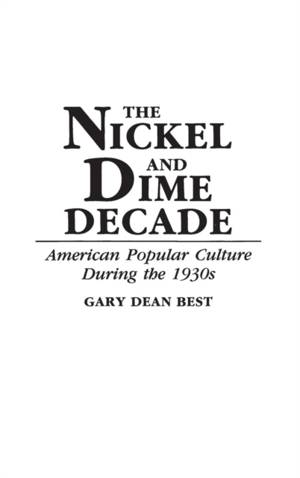
- Afhalen na 1 uur in een winkel met voorraad
- Gratis thuislevering in België vanaf € 30
- Ruim aanbod met 7 miljoen producten
- Afhalen na 1 uur in een winkel met voorraad
- Gratis thuislevering in België vanaf € 30
- Ruim aanbod met 7 miljoen producten
Zoeken
€ 127,45
+ 254 punten
Omschrijving
This study shows that, despite numerous surface similarities, the popular culture of the 1930s was different from that of the 1920s in a variety of ways, and not only because of the Great Depression. It was a period of quiet desperation and shifting values, one in which nickels and dimes replaced dollars as the currency of popular culture, and in which the emphasis was on finding methods to occupy idle time and idle minds. Popular culture during the 1930s is important for understanding not only how Americans coped, but why they did so with such good humor and so little of the discontent visible elsewhere in the world. An appreciation of popular culture during the 1930s is essential to understanding other aspects of the decade.
Alleen bij Standaard Boekhandel
+ 254 punten op je klantenkaart van Standaard Boekhandel
Beoordelingen
We publiceren alleen reviews die voldoen aan de voorwaarden voor reviews. Bekijk onze voorwaarden voor reviews.









